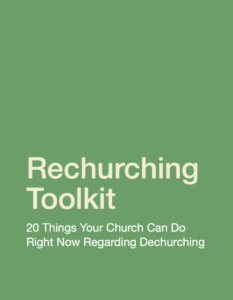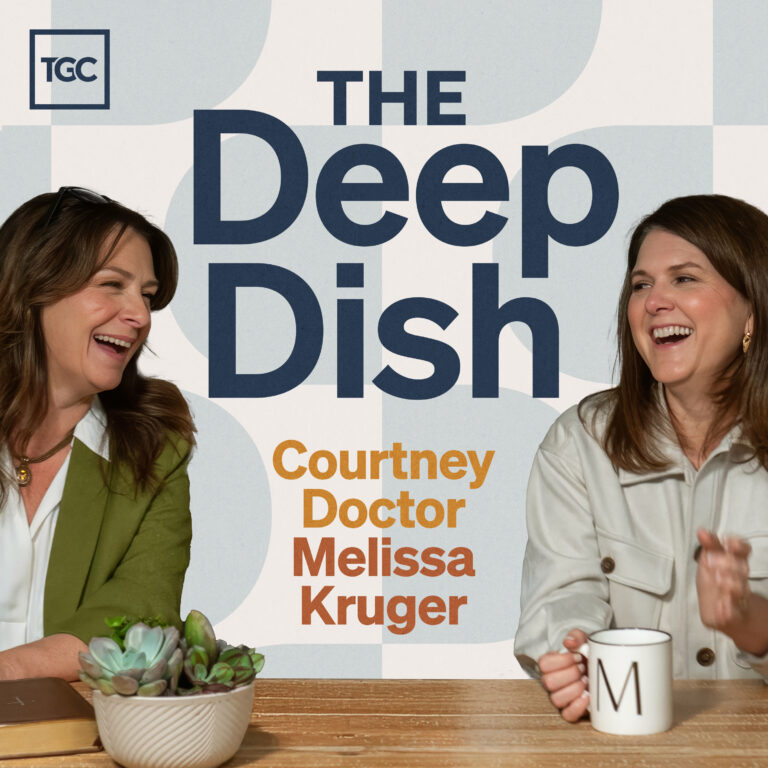A previous version listed Americans United for Life among groups cited on April 8 by Politico for their support of former President Trump. The CEO of Americans United for Life expressed public support for Trump and the GOP platform on July 8, the day the platform was publicly released.
This past weekend, men hoping to become Donald Trump’s running mate have vied to see who can be more pro-choice on abortion.
Florida senator Marco Rubio previously cosponsored federal legislation that would ban abortion after 15 weeks. But when recently asked about whether the GOP platform should include a long-standing call to ban abortion, he said, “I think our platform has to reflect our nominee” (referring to, and aligning himself with, Trump’s objection to a federal ban on abortion). Not to be outdone, Ohio senator J. D. Vance says he supports access to the abortion pill mifepristone (referring to, and aligning himself with, Trump’s support for the abortion pill). They likely knew that by Monday, the GOP platform would be adopted and, for the first time in 40 years, reflect a pro-choice position on abortion.
In Ernest Hemingway’s novel The Sun Also Rises, one character asks another, “How did you go bankrupt?” The other responds, “Two ways. Gradually, then suddenly.” The same answer could be given to social conservatives wondering how the GOP became pro-choice. It was happening gradually for some time. But then it happened suddenly.
Before we look at how it happened, let’s start with basic definitions. Central to the pro-life ethos is the belief in the inherent value and dignity of human life. The acknowledgment that life is sacred from conception until natural death undergirds the entire movement. As applied to abortion, the pro-life view is to support limits and restrictions on abortion in whatever ways are possible, with the ultimate goal of putting an end to the practice. In contrast, the pro-choice position is to support keeping abortion legal and accessible, typically within certain gestational limits.
These positions are binary. A person is either pro-life or pro-choice. Just as you cannot be a “little bit pregnant,” you cannot be a little bit pro-choice. Once you support abortion in any form, you lose the right to the label of pro-life. By this standard, the GOP was once pro-life and shifted—gradually, then suddenly—to being pro-choice.
From Platform to Personality
The first gradual step was to align the political platform with the personal views of the party’s presidential nominee.
Until recently, the GOP was officially a pro-life political party. Although the party platform isn’t binding on the presidential nominee or any other politicians, political scientists found that from 1980 until 2004, both Democratic and Republican lawmakers in Congress voted in accordance with their platforms about 82 percent of the time.
The GOP was once pro-life and shifted—gradually, then suddenly—to being pro-choice.
In 1980, Republican nominee Ronald Reagan pushed to have the language on abortion in the GOP platform changed to be more pro-life. Although it retained some of the inclusive language added in 1976 that was intended to appease all sides, the plank supported an anti-abortion constitutional amendment and efforts to cut the flow of taxpayer money to abortion services. It also pledged to appoint judges who “respect the sanctity of innocent human life.”
Similar pro-life language was included in every platform up through 2016. But in the months before the 2020 convention, Jared Kushner, the president’s son-in-law and top adviser, worked with campaign officials to overhaul the party’s platform. Kushner, a lifelong Democrat, objected to socially conservative language that offended homosexual Republicans, such as “We support the right of parents to determine the proper medical treatment and therapy for their minor children.”
Conservative activists were appalled by this move, so the Trump campaign took a different path and chose not to draft a new platform at all—they’d just reuse the 2016 document. Instead of listing what the party stood for, they issued a resolution stating “the Republican Party has and will continue to enthusiastically support the President’s America First agenda.”
Does Trump’s “America First agenda” still oppose abortion? Yes, but only in the last stages of pregnancy. The full passage in the new GOP platform on abortion reads,
We proudly stand for families and life. We believe that the 14th Amendment to the Constitution of the United States guarantees that no person can be denied life or liberty without due process and that the states are, therefore, free to pass laws protecting those rights. After 51 years, because of us, that power has been given to the states and to a vote of the people. We will oppose late term abortion while supporting mothers and policies that advance prenatal care, access to birth control, and IVF (fertility treatments).
This is pro-choice language, in keeping with Trump’s pro-choice position. The sleight of hand is that it seems to claim the 14th Amendment applies to the unborn. But if the GOP believes that’s true, then the federal government, not just the states, has a duty to protect life. The platform does no such thing. It gives broad support for IVF (even when it causes the death of a child) and only lists opposition to late-term abortion.
Theorem That Explains Abortion Politics
So, that process occurred gradually. Then it happened suddenly.
In 2023, Trump said he was proud to be “the most pro-life president” in American history. But it soon became clear he’d never abandoned his previous pro-choice values (in 1999, when he announced he was planning to run for U.S. president as a nominee for the Reform Party, he described himself as “very pro-choice,” even stating he supported partial-birth abortion).
In September 2023, Trump said about a bill in Florida banning abortion at six weeks, “I think what [Ron DeSantis] did [in signing the bill] is a terrible thing and a terrible mistake.” Then in April 2024, Trump declined to endorse a federal ban on abortion, saying the issue should be left to the states. To make sure voters knew where he stood, during the recent debate, Trump said he’d preserve access to the abortion drug mifepristone and that he doesn’t support criminalizing mailing abortion pills, nor does he support the drug’s regulatory approval being rejected by the Food and Drug Administration.
In a meeting with House Republicans in June, “Trump urged lawmakers to talk ‘correctly’ on the issue of abortion by framing it as a state issue and stressing their support for exceptions to abortion bans. Trump warned that abortion has ‘cost’ the GOP politically and is ‘too important to ignore.’”
Trump might never have heard of the median voter theorem, but that’s the concept to which he’s appealing. This key concept in political science was first proposed by Duncan Black in 1948. The theorem claims that in a country where people vote and there are two main political parties, both parties usually try to appeal to the average (median) voter. They do this because they want to win elections. So instead of having extreme views, they often choose middle-ground positions most people can agree with. This way, they hope to get the most votes and win.
Based on this theorem, we can predict how both voters and political parties will act. If one party positions itself to the left or right of the median voter, the other party can gain an advantage by moving closer to the average voter’s position. This creates pressure for both parties to converge toward the electoral center, near the median voter’s position.
What prevents both parties from converging on the median voter position? The primary check is for a sufficient number of single-issue voters willing to put principle ahead of a political party by defecting rather than compromising.
To illustrate this concept, let’s consider an example involving abortion policy. Imagine a state where the median voter generally supports moderate restrictions on abortion. According to the median voter theorem, both political parties should converge on this position to maximize their chances of winning. However, this shift doesn’t always happen in practice because of the power and influence of single-issue voters.
Let’s say Party A has traditionally been strongly pro-life, while Party B has been more pro-choice. If Party A moves too close to the center, here’s what might happen.
A group of passionate pro-lifers (single-issue voters) might feel betrayed by Party A’s shift toward more abortion-friendly policies. These voters care so deeply about the issue that they’re willing to vote for a third-party candidate who maintains a strong pro-life stance, or even abstain from voting altogether. Party A realizes that by moving to the center, they risk losing these dedicated supporters, which could cost them the election. As a result, Party A decides to maintain a more pro-life position than the median voter prefers, to keep these single-issue voters from defecting.
Meanwhile, Party B also avoids moving all the way to the center, as they have their own single-issue voters (pro-choice activists) who would defect if the party became too friendly to the pro-life cause. In this scenario, the presence of these principled, single-issue voters on both sides prevents the parties from fully converging on the median voter’s position. Instead, the parties maintain some distance from each other to keep their core supporters, even if it means not perfectly aligning with the median voter.
This example demonstrates how passionate, principled voters can influence party positions and prevent the complete convergence predicted by a simple interpretation of the median voter theorem.
Remember, though, that candidates and parties are typically less concerned about issues than they are about winning elections. They’re thus still incentivized to appeal to the median voter to win a majority of votes whenever possible. Their optimal strategy is to appeal to the median voter while preventing single-issue voters from defecting.
That’s what the GOP is successful in doing when it comes to abortion. They’ve made it possible for Trump to abandon his support for pro-life principles, while voters abandon their pro-life principles to support Trump.
Three Steps
Here’s why the GOP has been highly successful in applying that strategy.
1. The Dobbs decision shifted the median voter.
Currently, about 63 percent of Americans (including one in four white evangelicals) say abortion should be legal in all or most cases. Only 36 percent of Americans say it should be illegal in all or most cases. The median voter position on abortion is for abortion to be legal in all or most cases.
Candidates and parties are typically less concerned about issues than they are about winning elections. They’re thus still incentivized to appeal to the median voter.
But what about motivated single-issue voters? Before the Dobbs ruling overturned Roe v. Wade in 2022, single-issue voters on abortion leaned toward the pro-life side. In 2020, about 13 percent of voters identified as pro-life and only supported candidates with the same position. In comparison, only 10 percent of voters said they were pro-choice and would only vote for those with the same beliefs.
Today, that balance has shifted. Almost one in four (23 percent) registered voters are pro-choice and will only vote for candidates who share their views on abortion. In contrast, a mere 8 percent of pro-life voters will refuse to vote for a pro-choice candidate, such as Trump or Biden.
2. Major pro-life organizations have signaled they’ll support pro-choice candidates.
The polling shows few Americans will defect and refuse to vote for pro-choice candidates. But what about pro-life leadership? Unfortunately, a primary reason for the polls and the reason the GOP is able to shift to the left on abortion is that they’ve received cover from national “pro-life” organizations.
Many groups, such as Susan B. Anthony Pro-Life America, Students for Life, the Faith and Freedom Coalition, the Family Research Council, National Right to Life, and CatholicVote earlier confirmed that Trump still had their support, despite his embrace of abortion rights. On the day the draft platform was released, the president of Susan B. Anthony Pro-Life America and the CEO of Americans United for Life joined other groups in sending a letter to the RNC saying, “We support President Trump’s vision and his commitment reflected in the Platform to the causes that millions of Americans hold so dear—protecting life and promoting the family.” (Full disclosure: I once worked full-time for the Family Research Council and did contract work for Americans United for Life and Susan B. Anthony Pro-Life America.)
It used to be beyond belief that Susan B. Anthony Pro-Life America, one of the largest and best funded of the organizations, would endorse a pro-choice candidate. In 2023, they even made plans to oppose any presidential candidate who “refuses to embrace” a 15-week federal limit on abortion. But they quickly caved when Trump made it clear he didn’t support any such limit. Trump changed his mind, so they changed their principles.
The justification these organizations give for putting a political party ahead of their pro-life principles is to appeal to pragmatism. They fall back on the reasoning that since “the other side is worse,” they can’t afford to defect. Such political naïveté is astounding and a catalyst for political progressivism. By openly proclaiming the GOP will never lose their support (and votes) as long as the Democrats are marginally worse, they’re providing cover for Republican politicians to embrace pro-choice policies. We see this clearly in the latest draft of the GOP platform.
Herein lies the key difference between pro-life and pro-abortion activists. Pro-abortion activists recognize they’re to the extreme left of the median vote on abortion, yet they force Democratic politicians to cater to their demands by threatening to withhold support. The Democrats know that if their single-issue voters on abortion were to defect, they’d lose elections.
Planned Parenthood and other abortion advocates know this and use it to their advantage. They’re also willing to do something pro-life groups find unthinkable: lose in the short term (an election cycle or two) to advance their cause in the long term.
It’s inconceivable that Planned Parenthood would still support Biden if he suddenly opposed abortion rights. Yet many ostensibly conservative groups offer up a lame excuse: “What choice do we have? The other side is worse.”
3. The Democrats held firmly to their abortion extremism.
The Democratic Party platform holds the extreme position of opposing all federal and state laws that prohibit or restrict abortion. Ironically, this position helps to incentivize the GOP to be more pro-choice on abortion—as we see with the revised platform. The GOP can move left on the issue until they reach a point where the party is more in line with the median voter. We see this in their current position of only opposing “late term” abortion.
A primary reason the GOP is able to shift to the left on abortion is that they’ve received cover from national ‘pro-life’ organizations.
The result is that the GOP can continue in the future to shift further away from pro-life positions, if it helps them win elections. For example, imagine two single-issue voters, one who supports and one who opposes medication abortions (i.e., abortions that occur from taking abortion pills). Medication abortion now accounts for about 54 percent of all abortions and has been increasing since the Dobbs decision.
Because the GOP’s official position is to support whatever Trump wants, the Republican Party now officially supports the legalization of abortion pills. The single-issue voter who supports medication abortion has two options—she can vote for the Democrats or Republicans. The single-issue voter who opposes medication abortion, though, has nowhere to turn. And if she defects (by not voting or voting third-party), she’ll be treated as a pariah and told she’s helping the Democrats win.
The reality, though, is that those who refuse to defect are tacitly endorsing the GOP’s shift to the political left. And not only on abortion. The GOP is quickly learning that “You can’t defect because the Democrats are worse” is a winning message that keeps social conservatives in line. As long as the GOP remains marginally better than the Democrats on issues like gender identity, the party is free to embrace whatever position will entice the marginal voter (who tends to oppose social conservative policies).
Time for (Convictional) Inaction?
Is there anything that can be done? Last year, I suggested that if we were witnessing the political end of the pro-life movement, it might be time to abandon those organizations, leaders, and politicians who compromised and brought us to this point. I proposed we might need to replace them en masse and to find and promote those who are truly willing to fight for the unborn instead of those who kowtow to a political party.
Perhaps I’m naive, but I still believe pro-life voters (and other social conservatives) will realize their choices are a political party that wants to embrace abortion, same-sex marriage, and transgenderism today and a political party that believes it’s electorally prudent to adopt those politics next week.
We still have the option to defect, temporarily, until we’re treated as voters whose views are valued. We can still embrace convictional inaction as the painful short-term solution to fixing the long-term problem. We can still prevent our political life from being a choice between two flavors of antihuman progressivism. We can, but the question remains whether we have the courage and political will to make such a choice.
20 Things You Can Do Right Now to Prevent Dechurching
 We’re currently experiencing the largest and fastest religious shift in the history of the United States. But there are practical things we can do inside our local churches.
We’re currently experiencing the largest and fastest religious shift in the history of the United States. But there are practical things we can do inside our local churches.
Jim Davis and Michael Graham have commissioned the largest and most comprehensive study of dechurching in America. Informed by their findings, they’ve written a book and developed this corresponding toolkit with resources to help you address the dechurching phenomenon.
We’re delighted to offer you the ‘Rechurching Toolkit’ for FREE today. Click on the link below to get instant access to this resource—worth $100—and be equipped to understand and address the issues behind dechurching.


































